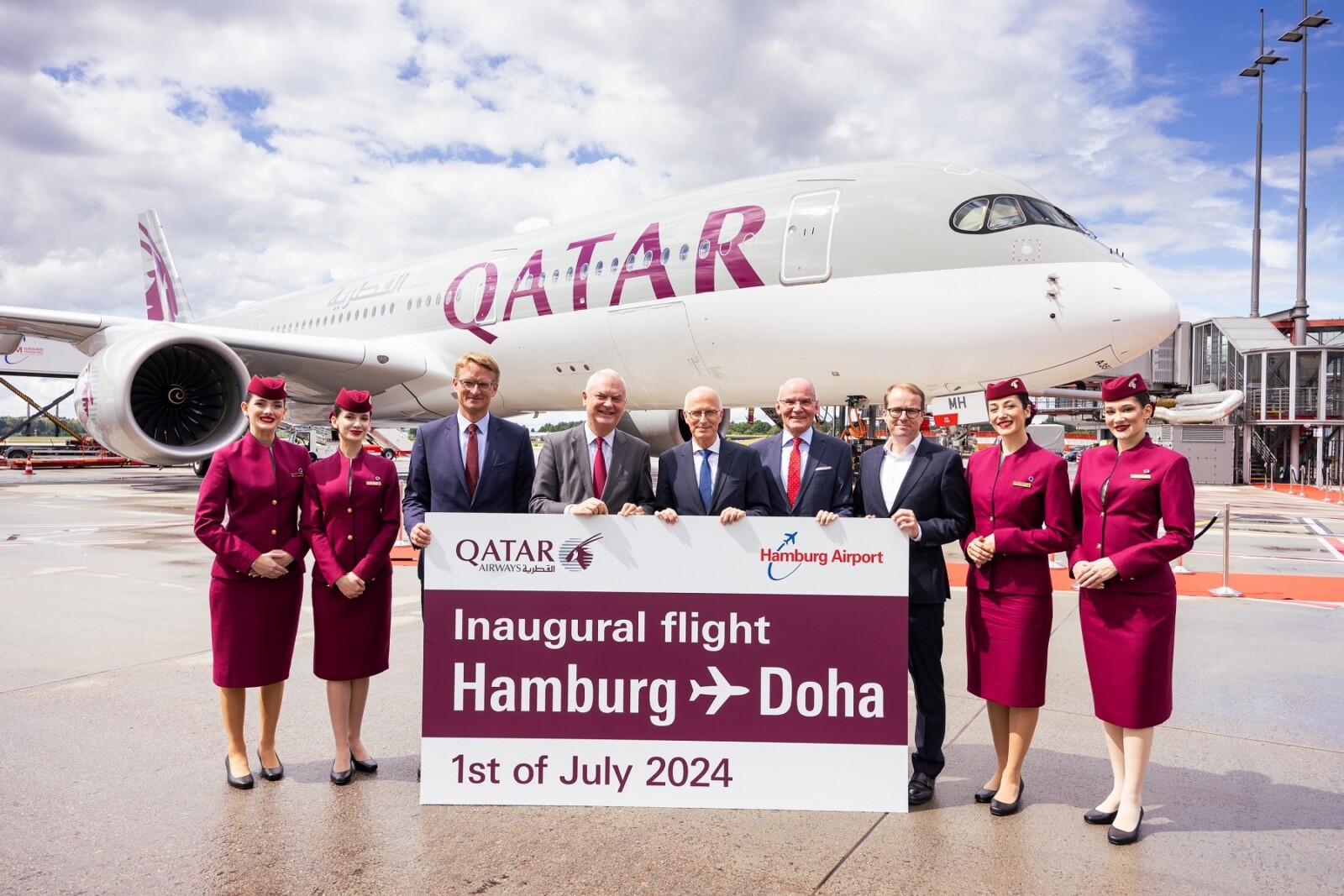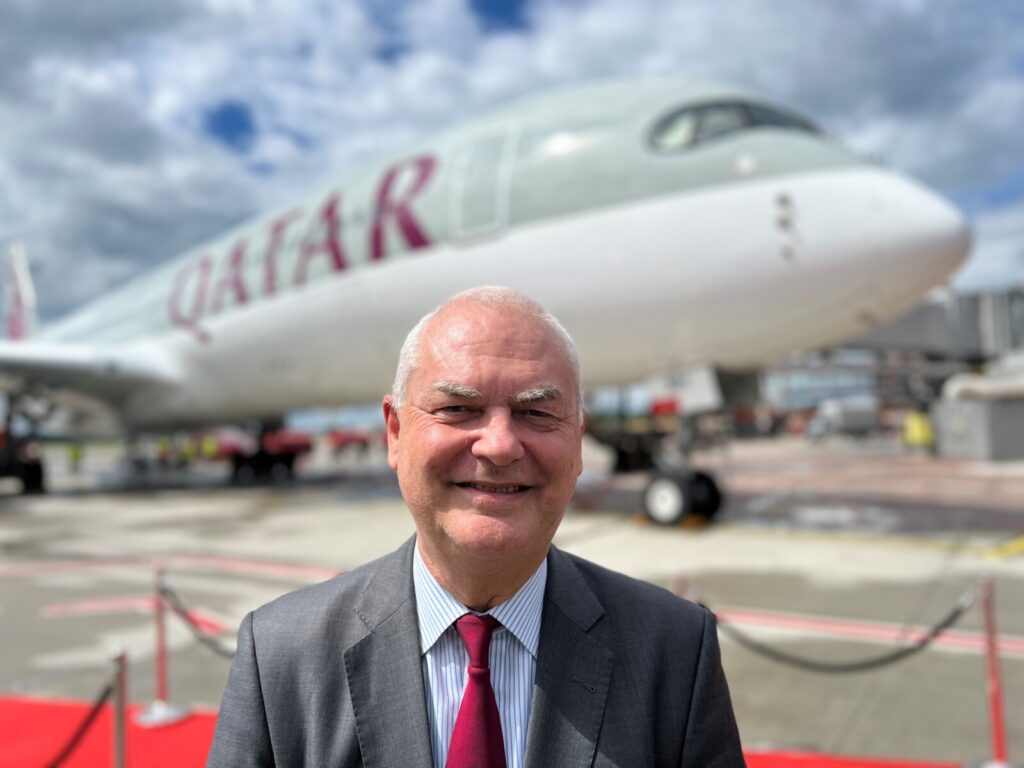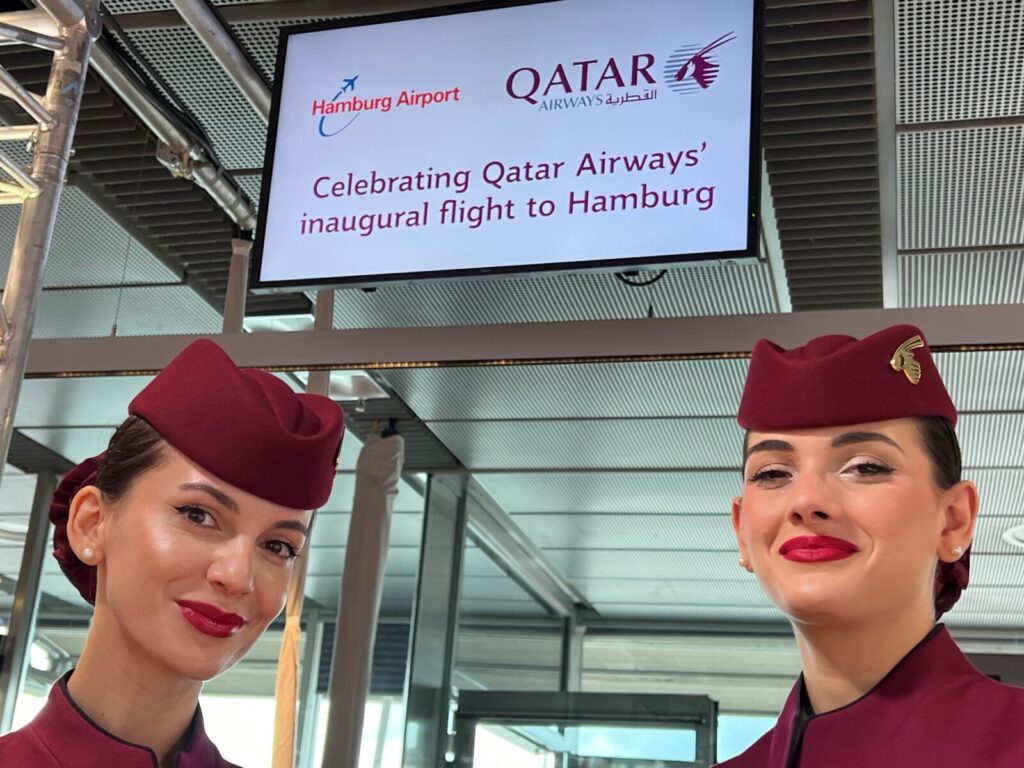Qatar Airways Landing An A350 In Hamburg Makes A Powerful Statement
02 July, 2024
7 min read
By joining our newsletter, you agree to our Privacy Policy


Qatar Airways landing an A350 in Hamburg has made a powerful statement about the airline's commitment to Germany and Airbus.
When the first scheduled flight from Doha touched down in Hamburg, Germany, on Monday, the aircraft operating the inaugural flight was a statement itself. While the regular schedule calls for Boeing 787-8 service, on this special occasion, an Airbus A350-900 landed on a rainy Hamburg runway.
“That was not by accident, but I wanted it as a signal to Hamburg and to Airbus as an important partner”, says Chief Commercial Officer Thierry Antinori in an exclusive interview with Airlineratings.com.
Major parts of the A350 are assembled in the northern German port city. For the CCO, this gesture has many facets. Antinori (below) is an industry veteran who started his career in 1986 in his native France for Air France. He later moved to Germany for the carrier and then joined Lufthansa in 1997. In 2011, he left to head up distribution for Emirates and in 2019, he joined Qatar Airways. Speaking German fluently, he says: “It wasn’t by accident I spent a long time in Germany, I understand and like this country and believe in its values.”

Once taking what is effectively the number two job at Qatar, he emphasized routes to Germany. “In opening Hamburg today, we are the only Gulf or Asian carrier serving five cities in Germany,” says Antinori.
Emirates would love to do the same, being eager for decades to land in Berlin. While Qatar enjoys a new Open Skies arrangement with the EU, granting it all the access it wants to Germany from year-end, UAE-based carriers are stuck with the limited historical traffic rights they have.
On behalf of Lufthansa, the German government has been blocking any further negotiations for many years.
But the A350 deployment on the first flight to Hamburg had yet another symbolic aspect: Qatar Airways under its long-time CEO Akbar Al Baker, who left last year, was entangled in a dispute with Airbus over alleged quality problems on the wings and fuselage of its A350s. This led to a voluntary grounding by the Qataris of their A350 fleet – and to court battles between the airline and Airbus. This has since been resolved. Antinori sighs: “For me, it’s a huge relief that the dispute with Airbus has been overcome and since March, all our A350s are flying again.”
While Lufthansa is now charging its passengers fare surcharges to compensate for new EU emission charges, Antinori stresses: “Sustainability also comes from a modern fleet. How many four-engine Airbus A340-300s does Lufthansa still fly? Sorry, Lufthansa’s current fleet is not really focused -yet- on sustainability. You can moan, but you can also do your homework, and that’s what we do. For Lufthansa, it’s high time to do theirs, and big efforts are being made. But even Air France has been quicker.”

But also at Qatar Airways, four-engine aircraft are still very active, as the airline (like Lufthansa and many others) has reactivated eight of originally ten A380s. “We will keep flying the eight A380s for some more years, their operation works very well for us on certain routes. Either where there is high demand for premium seats as on our London flights, or where we don’t have sufficient traffic rights, such as on Australian routes to Perth and Sydney.” Contrary to even Lufthansa, Qatar does not plan on any cabin upgrades on the bridge-gap A380s.
Now serving 171 destinations around the globe, “our network is approximately the size of what we need and want,” says Antinori. “Further new routes depend on the traffic rights, there are places we would immediately serve if we could, like Toronto or Mauritius.” The lack of sufficient access also hinders expansion on existing routes, “such as to Australia, India or China, “to increase frequencies there has a high priority.”

In terms of acquiring stakes in further other airlines, the focus is currently on Africa. Buying a 49% stake in RwandAir is imminent, as announced earlier. But Qatar wants more. “We are in discussions with another airline from southern Africa, and there could be a result within months,” predicts Antinori. “Rwanda is located in Central Africa, but in South Africa and generally in southern Africa, we see many points that we can’t reach with our fleet. With another partner, there could be complementarity with RwandAir.”
This is in the hands of new CEO Badr Al Meer, who has turned Qatar’s company culture around since taking over. “He does it differently, he says he implements the priorities of his generation, and he is age 44. Part of that is a focus on digitalization and sustainability, and for that, he has restructured and simplified parts of the organisation,” observes Antinori.
“I have fun with the human being Badr Al Meer, he has a very good style, the staff likes him a lot and I’m also fond of working with him,” says the Qatar Airways CCO. And this despite the fact it means having to oversee an even bigger portfolio himself: “Now I’m not only responsible for passengers, strategy and fleet as before but in addition looking after cargo, our stations and Qatar Executive, our business jet affiliate.” Antinori seems to like the challenge, saying he has no plans to retire any time soon, at age 62.
JOIN: AirlineRatings.com YouTube Channel
GET: Accurate MH370 Information From AirlineRatings.com Newsletter
Airlineratings.com is packed with information about air travel and answers questions that many of us may have thought of, but didn’t know who to ask. Well, now you do!
Airlineratings.com was developed to provide everyone in the world with a one-stop shop for everything related to airlines, formed by a team of aviation editors, who have forensically researched nearly every airline in the world.
Our rating system is rated from one to seven stars on safety – with seven being the highest ranking. Within each airline, you will find the country of origin, airline code, booking URL and seat map information.
The rating system takes into account a number of different factors related to audits from aviation’s governing bodies, lead associations as well as the airline’s own safety data. Every airline has a safety rating breakdown so you can see exactly how they rate.
Over 230 of the airlines on the site that carry 99 per cent of the world’s passengers have a product rating.
Given that low-cost, regional and full-service carriers are so different we have constructed a different rating system for each which can be found within each airline.
Get the latest news and updates straight to your inbox
No spam, no hassle, no fuss, just airline news direct to you.
By joining our newsletter, you agree to our Privacy Policy
Find us on social media
Comments
No comments yet, be the first to write one.


